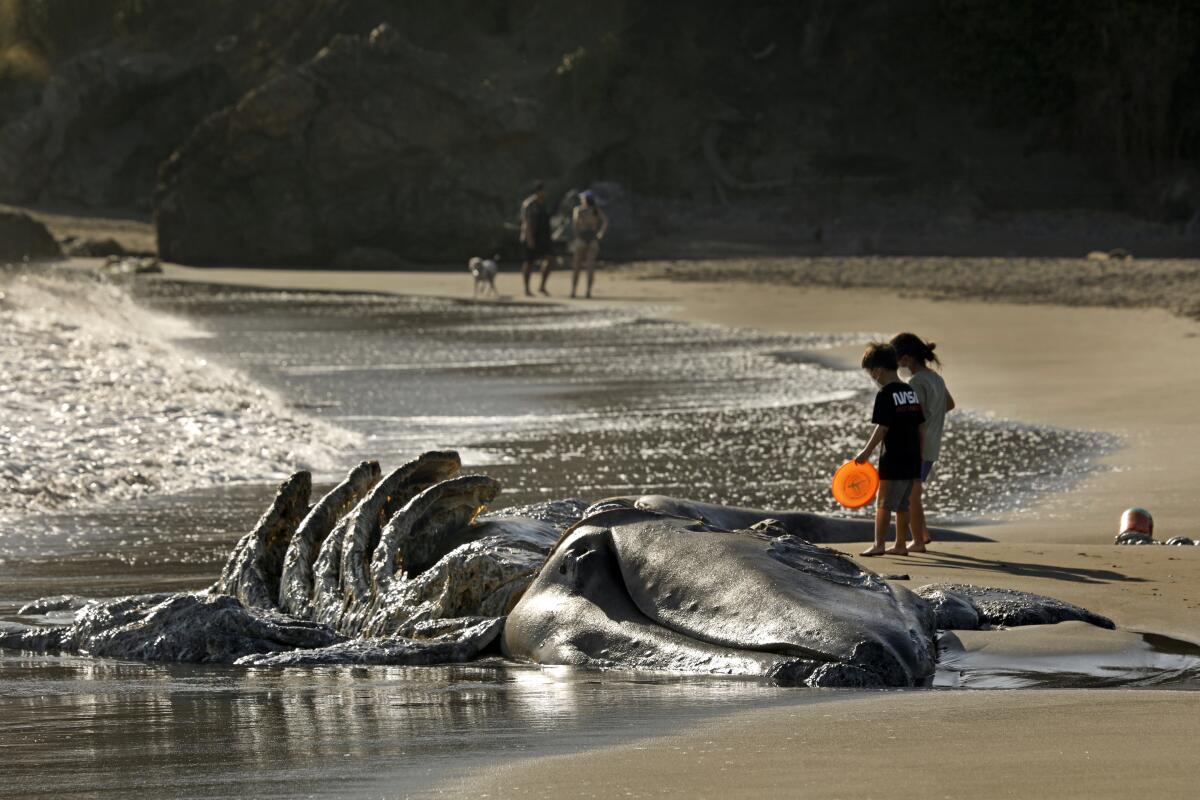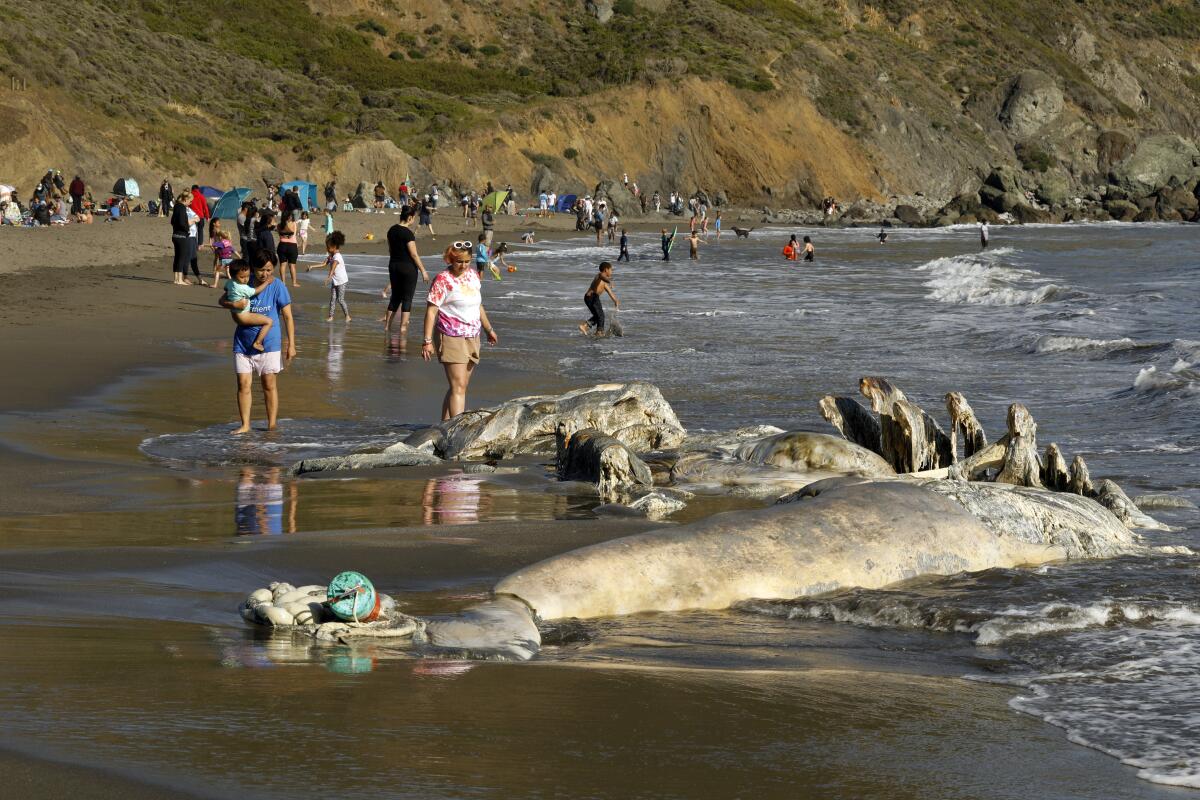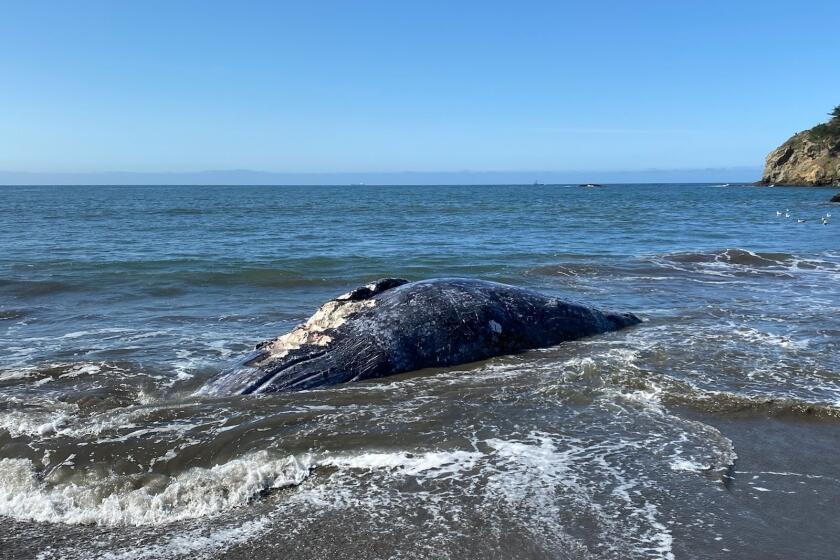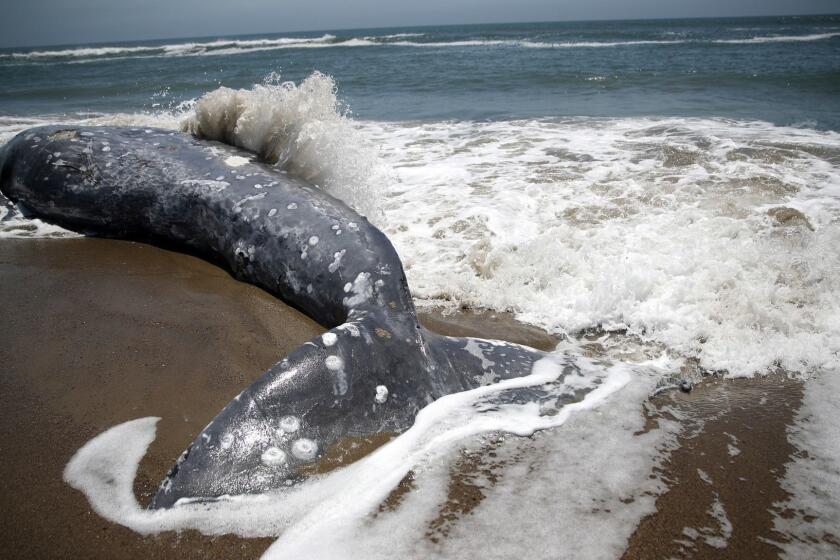Three more whales wash up dead near San Francisco — eight total in five weeks

MENLO PARK, Calif. — Three more gray whales have washed up dead in the San Francisco Bay, adding to the fatal beachings of five others in the region over the last month, including a 46-foot fin whale, scientists from the Marine Mammal Center and the California Academy of Sciences said Thursday.
In 2019, the U.S. National Oceanic and Atmospheric Administration announced it was going to investigate an unusually high number of gray whales found dead along the North American west coast. The investigation is continuing.
Although the number of dead whales may seem alarming, the numbers are actually lower than they have been the last two years, said Michael Milstein, an NOAA spokesman.
In 2019, 214 washed up on the beaches and coasts of Mexico, the United States and Canada — 34 in California, 13 in San Francisco Bay. The following year, the numbers remained high: 174.
The whales spend the winter off Mexico’s waters, then they head back north and stay off the coast of California in spring and summer.
Scientists believe the numbers observed on shore are a fraction of the real die-off. They say many more die at sea and are never observed, instead floating offshore or sinking to the bottom.
Although the gray whales are still migrating north from Baja California, fewer whales have stranded this year than in the two previous years — just 68 so far.
While the death of these whales is tragic, Milstein said, it offers an opportunity to “better understand what’s affecting the other 20,000 remaining gray whales out there.”
Most California gray whales migrate from summer feeding grounds in the Bering and Chukchi seas near Alaska to winter calving areas along Mexico’s Baja peninsula. It’s a 12,000-mile round-trip journey — the longest migration of any mammal.
The whales appearing in San Francisco Bay are migrating north. Most probably haven’t eaten since fall when they left their feeding grounds near the Arctic.
In 2017, NOAA scientists estimated that there were roughly 27,000 gray whales cruising the eastern Pacific — a population explosion and conservation success from the 1960s, when they were considered close to extinction.
The most recent three whales to expire washed ashore between April 27 and May 4, at the Port of Oakland, Angel Island and Lime Point, in the Golden Gate National Recreation Area. The one at Lime Point was observed by Marine Mammal Center researchers while it was alive.

Kathi George, director of field operations and response at the center, said the male whale had spent 47 days exploring the bay before dying.
“We’ve seen more whales in recent years coming into the bay and looking around,” she said, which was both a “cause for celebration and a cause for concern.”
She said that it was amazing to see these animals so close, but that with the die-off in the last two years, there’s always some fear when they begin to behave differently.
Three gray whales have died on their recent southbound journey along the West Coast, prompting fears of another year of strandings and questions about what is imperiling the creatures.
The causes of recent deaths are unclear. Because they washed ashore in areas that are inaccessible, researchers will not be able to perform necropsies on the whales.
Before the most recent discoveries, George said, three of the five whales that died in the last five weeks were killed by ship strikes. The reasons the two others died are unknown.
A previous investigation was launched by NOAA on gray whales in 1999 and 2000. At that time, more than 600 whales died during a two-year span. A cause was never determined; however, scientists wondered whether extended sea ice was causing a disruption in the whales’ ability to find food.
For now, boaters in the San Francisco Bay should go slow and be cautious, George said.
“Be grateful that you have this opportunity to see them so close to home,” she said. “But be careful.”









